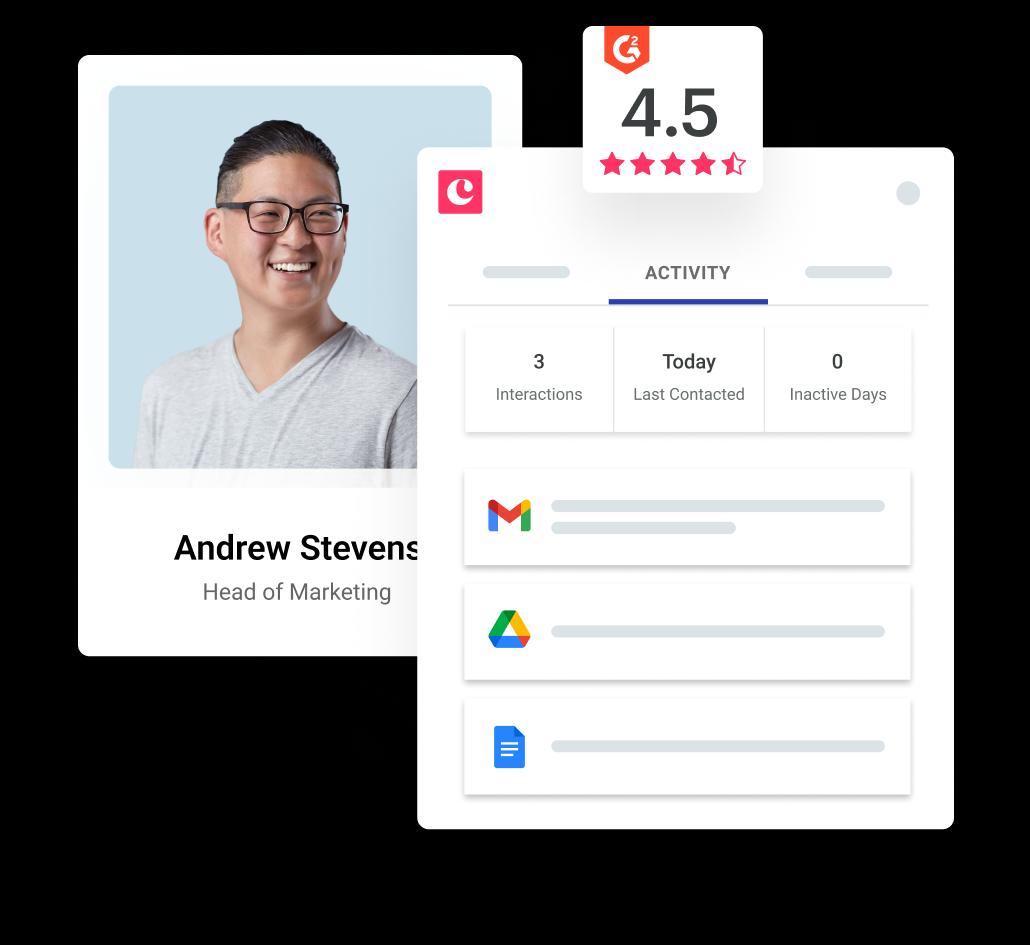
Carrie Shaw
Chief Marketing Officer
As a small business owner, you know you need a marketing plan to drive sales.
But it's hard to know where to start to master the elements of a marketing plan. You might be strapped for time, or find the whole idea of creating a marketing plan for brand awareness exhausting. However, building a marketing plan for your small business isn't any harder than making a list of objectives and goals that will help your business grow and drive revenue.
And at its core, your marketing plan will shine a light on how your business stands out from your competition. As Seth Godin says, there are a hundred things that make your business special—you just have to look for them:
So, what makes your small business special?
To figure this out and make your marketing plan successful, you need to build it from the ground up. We're talking about perfecting your unique selling position (USP), target market, marketing strategy, and most importantly—your marketing objectives.
In this post, we’ll look at:
Why do you need a marketing plan for your small business?
When you started your company and created your digital marketing business plan, you most likely set some goals you wanted to achieve.
But how did you plan to achieve those marketing objectives and goals?
Marketing is your company's revenue fuel. Without it, it's hard to reach customers, tell your company's story, and most importantly, sell stuff. Of course, other factors play a part in driving revenue too, like product quality, customer service and your sales reps.
But without a marketing plan and clear marketing objectives, it's hard to get your message across to your customers.
Here are two key reasons why you need a small business marketing plan.
1. It becomes an encyclopedia for everything marketing-related
Do you feel like your business lacks a driving force when you want to market yourself? Creating a marketing plan can change that.
It will give your team a central focus point to get excited about and show them how to get involved in your marketing goals. Sometimes a team needs more than revenue targets to get behind a digital marketing plan; they need a vision.
Creating a robust plan will give your team an encyclopedia to refer back to everything marketing-related in your business. If they need to check a budget figure or take a closer look at a campaign strategy, they can just check the plan.
2. It will cement a marketing budget
Too often, small businesses neglect their marketing budgets.
A report by OutboundEngine found 58% of small businesses spend five hours or less on marketing. Respondents also felt their budgets were holding them back from succeeding:
And here's the real kicker. Of small and medium-sized business owners who spent the least amount of their time on marketing, 47% didn't experience revenue growth in 2018.
Putting a marketing plan into place can help overcome these obstacles. It’ll help you plan and allocate funds specifically for marketing, so they don't get used up on something else in the business. And it’ll lay out your game plan to everyone at the company, so they know the funds allocated to marketing are non-negotiable.
Before you build your plan—prepare your documents
Now, before you start writing a marketing plan, there are some documents you need to gather up first.
- Your latest financial reports to see how much you can afford to allocate to your marketing plan
- A list of every product/service you offer
- Whatever information you've managed to get on your market:
- Your competitors
- Geography
- Customer types
- Distribution channels
Once you've gathered all your documents, compile them into a Google Doc (or if you’re creating a presentation, a Google Slides deck or something similar). That way, you'll have a single reference point for when you start building out your marketing plan.
Then, ask your customer service/customer-facing/sales staff for their opinion on what they think might work, marketing-wise. They are the people who talk to your customers day in, day out. Ask them what they think are your biggest hurdles with getting new business, or what might be some of the products or services your customers have been asking for. You don't have to put all these ideas into your marketing plan, but it's important to have that background information.
Having all of this information in front of you will make it easier to build out your marketing plan.
How to create a small business marketing plan in 8 steps
Step 1. Define your target market
If you try and sell to everyone, you'll sell to no one.
Defining your target market is a crucial first step to creating a marketing plan, and you should be reviewing it regularly. CoSchedule found that successful marketers are 242% more likely to conduct audience research every quarter to perfect their target audience.
According to Entrepreneur, your target market should be summed up in a simple, one-paragraph profile. It should include specifics about your target market like their:
- Age
- Sex
- Family composition
- Earnings
- Geographic location
Once you've written this down, you can even go a little deeper and ask yourself:
- Are my customers conservative or do they like trying new things?
- What kind of lifestyle do they lead?
- How often do they look to purchase the product I'm selling?
Most importantly, what problems do your target customers have, and how your product solves it? The best way to do this is to uncover a customer's pain points and focus your marketing efforts around them. Your target audience's pain points might be related to:
- Finances: They need a solution that fits in with their budget.
- Support: Your prospects aren’t receiving the support they need at critical stages of the customer journey or sales process
- Productivity: They need a solution that makes their life easier and more productive
Then, use all of this information to build out a detailed customer persona you can use in your marketing plan, like this example of a detailed buyer persona by Iron Springs Design:
From all this, you'll have enough information to create a mock-up of your ideal customer. This will help you align any goals and objectives you create in your marketing plan to keep you focused on selling to customers who will spend the most money with you and stay with you the longest. And once you know who you're selling to, it's easier to give them what they really want.

Pro-tip 👇
Know your customer.
Need an easy way to figure out who your ideal customer is? Use this worksheet!
Step 2. Write your mission statement
What are you trying to achieve with your business, and what's driving you to make it happen?
Your mission statement will become the foundation of your small business marketing plan, so don't rush it. Forbes says to write the perfect mission statement, you need to answer four key questions:
- What do we do?
- How do we do it?
- Whom do we do it for?
- What value are we bringing?
Then, combine your answers into a concise paragraph (or two).
A not-so-great mission statement can create vagueness for your marketing team, and your customers. Like this one, from a multinational company (who we won't name):
“To be a company that inspires and fulfills your curiosity.”
This mission statement doesn't say who the product is for, or what value they're bringing to the table. It's just too vague.
Although your mission statement won't be used in any direct marketing activities, it’ll help keep your campaigns and activities aligned with your company's goal. Remember, a mission statement should clearly outline your company's purpose. Check out Uber's mission statement:
Clear. Concise. To the point.
If you ever start to wonder if your marketing goals or tactics are on the right track, your mission statement should help you find your bearings.
Step 3. Nail your USP
Remember Seth Godin's advice from earlier about finding your business's unique traits? Now's the time to figure it out.
Take a look at all of your competitors and write down every single thing that your business does differently than them, no matter how big or small. It might be a slight difference in the way you deliver your customer service, or your product might be cheaper.
From the list, decide what points you can use to make your business stand out. You know, points that tell your customer that you’re the best choice.
This is how Death Wish Coffee built their UPS to position themselves in the saturated coffee bean market. They've picked out a couple of their unique traits:
- They claim to have the world's strongest coffee
- It's 100% natural
- Unbeatable returns policy if their customer isn't happy
Step 4. Look for your threats
These aren't just competitors, either.
They can be anything that could pose a problem for your marketing goals. Ask yourself questions like:
- What trends in the marketplace might work against the business?
- Are there competitive trends that could hurt us?
- Are your current products successful in the market right now?
- Are there any operational issues that could affect us?
For example, Death Wish Coffee's threats could look something like this:
- Threat 1
- To keep up with demand, our coffee grinding equipment needs upgrading, which is expected to cost $10,000. If we can't find the money to make the upgrade, we might not be able to fulfill customer orders in the expected timeframe.
- Threat 2
- One of our major competitors, Angel Coffee, has recently poached one of our head roasters. We must assume that they now know how we make our coffee so strong, and prepare for them to release a similar product.
As you can see, the threats don't relate directly to marketing, but they do affect the business as a whole and can still impact your marketing plan. For example, if Death Wish Coffee's equipment can't be upgraded, they might not be able to fulfill customer orders as fast as they anticipated. Their marketing team will have to keep this in mind for any campaigns or events they run to make sure they can meet their customer's expectations.
Step 5. Create your marketing strategy and objectives
Now, you're ready to start building a clear plan that will support your business goals.
Let's say a small neighborhood bakery wants to start selling its baked goods online. Its marketing strategy would be to expand its business into a new market segment which was outside of their neighborhood. For this strategy to work, the bakery will have to break their goal down into manageable objectives.
It could look something like this:
- Objective 1
- Create awareness of our baking and online ordering in a neighboring suburb. By the end of the first six months, we want to have sold X amount of baked goods to the chosen suburb online.
- Objective 2
- Drive awareness to online orders through our bakery stall at upcoming community fair. Aim to give out 1,000 flyers with an online discount code to drive new online orders within the first six months.
The goal is to make any marketing objectives clear and simple enough to attach tactics to them. Just like anything else in your marketing plan, make sure the objectives are realistically achievable.
The small bakery won't become The Cheesecake Factory overnight. If they try to scale too quickly, they'll get overwhelmed and lose sight of their goals. For example, if the bakery tries to scale too quickly, they might be inundated with orders that they can't fill. This could then hurt their reputation and lose the business customers.
The same could happen to your business if you set objectives that are unrealistic or unmanageable.
Step 6. Research your marketing tactics
A solid marketing plan will outline marketing tactics from the top of your funnel right down to the bottom.
Your marketing funnel is a way to track your customer's journey, from the moment they come into contact with your business until they make a purchase (and beyond). Here's an example:
For a marketing funnel to benefit your business, you need to use certain tactics for each stage if the customer's buying journey. For example, you might build awareness at the top of your marketing funnel using direct marketing and social media. To encourage purchases, you could launch a contest or a loyalty program.
Let's use our small neighborhood bakery from earlier as an example. They might want to sell 20 cakes a week once they launch their bakery online, and they plan to use their social media to drive sales. First, they need to:
- Find their customers: As they're a B2C business, the social channels the bakery is likely to start with are Facebook or Instagram. They can also do a short in-store survey to find out what media channels their current customers use the most.
- Post regularly on a selected channel or two: Once the bakery knows where their target audience hangs out, they can start to post regularly on these channels and showcase their products along with their new online ordering feature.
- Next, they can automate their posts: One of the biggest problems facing small businesses when it comes to marketing is finding time to do it. The bakery can use a tool like Buffer or Hootsuite to schedule posts to their target audience at pre-set times on social media to make their life easier.
Then, the bakery's next goal is to keep their customers engaged. Once their social accounts are up and running, the bakery should make sure their posts include calls to action on how their followers can place an order online.
To build relationships with new and current followers, the bakery will need to engage with their audience and respond to comments. This will create an ongoing conversation across their social media channels and help build trust in their business.
Pro-tip: Whatever marketing tactic you use for an objective, make sure it helps you reach a goal.
Step 7. Set your budget
This is where a lot of small businesses get stuck. They don't know how much money they should be putting towards their marketing plan.
OutboundEngine's report found that 55% of small and medium-sized business owners spend less than 5% of their annual revenue on marketing:
The report also found that even a small increase in marketing investment helped small and medium-sized businesses grow their revenue over those who spent less on their marketing.
However, figuring out how to allocate your marketing budget goes beyond just setting aside an annual lump sum. Break your budget down and allocate amounts to each objective. Here’s how.
Your budget will be broken down into two categories: set expenses such as monthly subscriptions and website hosting fees, and variable expenses such as advertising costs. For example:
- Identify areas where you want to allocate advertising spend (flyering, trade shows, paid social media campaigns, etc.)
- Consider how different seasons will affect your spending. For example, a brick and mortar clothing store will want to set aside a chunk of their marketing budget for the holiday season
Then, write down every expense and the estimated price down so that it's allocated for. This free marketing budget template from Smartsheet is perfect for setting up specific expenses:
Step 8. Finally, measure and review your plan as you go
Lastly, for elements of a marketing plan, make sure you're always keeping an eye on which marketing tactics are working better than others.
Cutting the fat from your marketing plan can help free up funds to put towards tactics that are driving real revenue.
Let's take our bakery example. They spent about 10 hours a week on their social media pushing their online orders, which landed them about 50 sales a month.
At the same time, they set up an email referral program, which gave customers 10% off each cake order when they referred five new customers.
The referral program brought in roughly 200 sales a month. However, the bakery only allocated $100 a month to the referral program, making it hard for them to grow it and get even more sales. If the bakery can allocate double the amount of money to their referral program, it should open up doors for them to reach more customers—and ultimately, drive more business to their bakery.
If the bakery reflected on its marketing plan regularly, it would've been able to fine-tune the referral program and allocate more of its marketing budget towards it. Because the team didn't measure performance, it couldn't see that the referral program was their biggest growth channel for new online sales.
Prioritize your small business marketing plan and stick to it
You might be kicking yourself if you've launched your business without a marketing plan.
However, once you realize that a marketing plan isn't much different from a list of goals and objectives, creating one isn't as daunting as many small business owners think.
Businesses that have a solid marketing plan behind them can work towards their objectives and goals more easily while sticking to their budgets. Remember, a marketing plan doesn't have to take months to create. It just needs to have your goals, tactics and budget clearly planned out to keep your business on track.
Don’t ignore your marketing, and make sure to allocate enough money to it. Marketing can be fuel to your business’ fire—use it!










